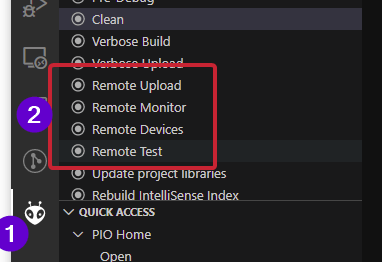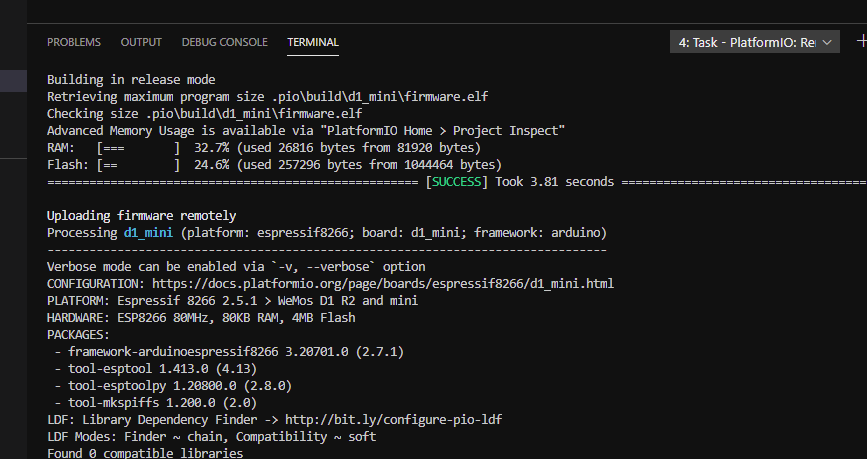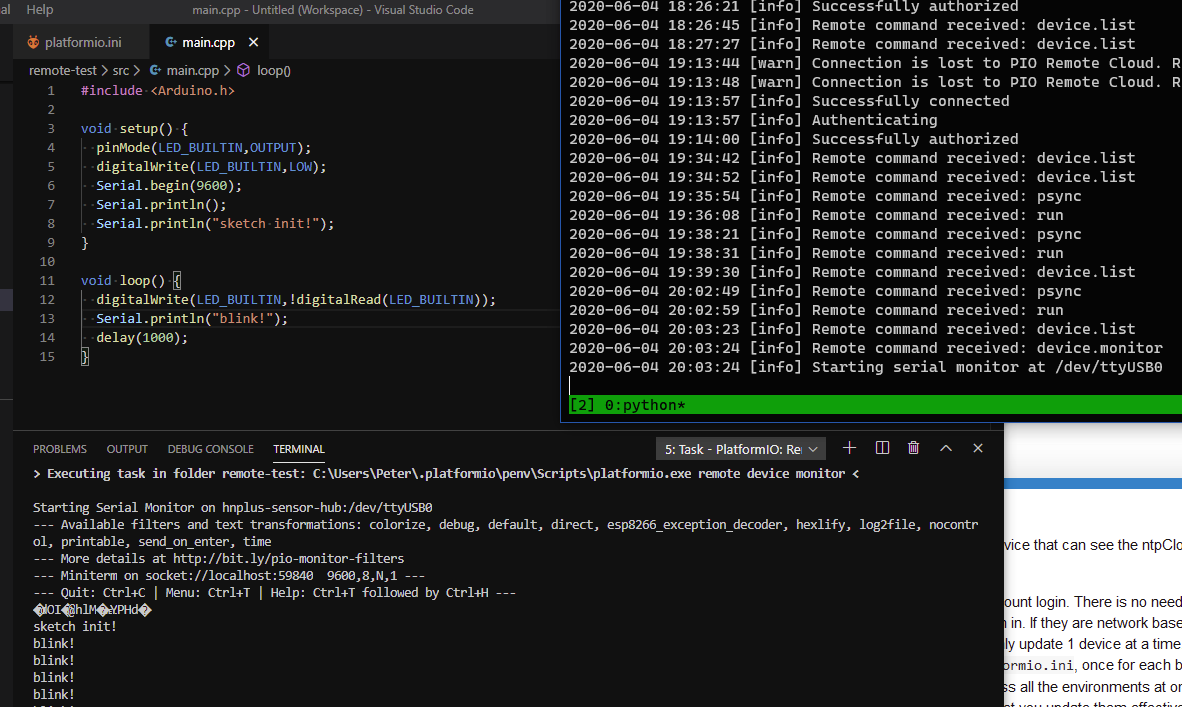Hello
VS Code Version: 1.45.1 (system setup)
PlatformIO version: 4.3.4
Python version: 3.8.3
OS: Windows 10 pro x64 10.0.18363
I have many problems follow the documentation about platformio remote, seem like it jump many steps or is only for advance users. I don’t know if my level of English is not enought for understand, but is very dificult for me.
-
The installation proccess is not clear, when I tried run Remote, showed me an error, that I don’t have python 3.5 intalled and I need to unistall Plaformio Core and reinstal, but I have the lastest version of both. Them, the command
python get-platformio.pygave me an error, I deleted penv folder but nothing change, the error continued, I don’t know what exactly I did for resolved, but I get a new warning:
Obsolete PIO Core v4.3.4 is used (previous was 4.3.5a1) Please remove multiple PIO Cores from a system: https://docs.platformio.org/page/faq.html#multiple-pio-cores-in-a-system
when I tried uninstall, only show one version installed. -
How I can add new device to the list?
pio remote agent startonly add the computer that I use, but I want to add my ESP8266 -
Do I need to use a static IP? I already used OTA for other proyect, but only in a local network, PIO Remote can upload outside of local, but I don’t even know the configuration for
.inifile for this. -
What is the code for ESP8266? I mean, if I need a library, an authentication process or connect to a specific server. Is only avalible for some devices?
-
How I can Upload to a device?
-
How I can use remote serial monitor?
I’m doing a IoT proyect, and I want to know how to update devices remotely. If I have 10 devices, updete one by one, desconnecting or moving it can be a true pain. But, PIO remote can update 10 devices simultaneously or I need to do one by one?



